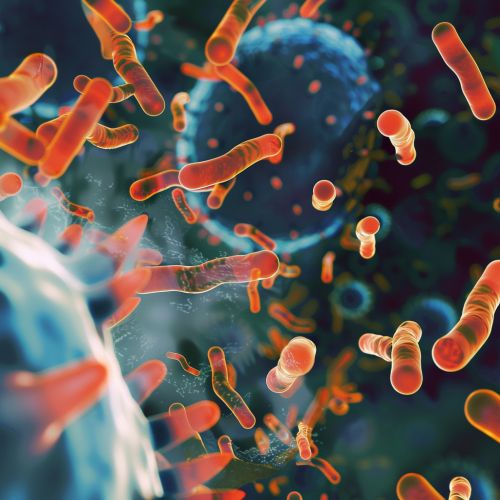Antimicrobial peptides
Introduction
Antimicrobial peptides (AMPs) are a unique and diverse group of molecules, which are found in the innate immune system of various organisms. These peptides are potent, broad spectrum antibiotics which demonstrate potential as novel therapeutic agents. AMPs are a part of the innate immune response, where they play a key role in the body's first line of defense against pathogenic organisms.


Classification
Antimicrobial peptides can be classified based on their structure and amino acid composition. They are generally divided into four groups: linear peptides without cysteine, peptides with cysteine (disulfide bonds), cyclic peptides, and peptides derived from larger proteins.
Linear Peptides without Cysteine
Linear peptides without cysteine are usually amphipathic and α-helical. They are often found in the skin and mucous membranes of animals. Examples include magainins, cecropins, and melittin.
Peptides with Cysteine (Disulfide Bonds)
Peptides with cysteine form two or more disulfide bonds. They are often found in insects and plants. Examples include defensins, thaumatins, and heveins.
Cyclic Peptides
Cyclic peptides are characterized by a cyclic structure, often formed by a disulfide bond. Examples include polymyxins and bacitracins.
Peptides Derived from Larger Proteins
Peptides derived from larger proteins are usually released by enzymatic cleavage. Examples include lactoferricin and ovoflavin.
Mechanism of Action
The mechanism of action of antimicrobial peptides is generally considered to be primarily the disruption of microbial cell membranes. The peptides interact with the lipid bilayer of the cell membrane, leading to its destabilization and eventual rupture, resulting in cell death. However, some antimicrobial peptides have been shown to have additional or alternative modes of action, including the inhibition of cell wall synthesis, the inhibition of protein synthesis, and the disruption of nucleic acid synthesis.
Therapeutic Potential
Due to their broad spectrum of activity and the low propensity for development of resistance, antimicrobial peptides are considered potential candidates for the development of new antibiotics. However, there are several challenges that need to be overcome, including toxicity, stability, and delivery issues. Despite these challenges, several antimicrobial peptides are currently in clinical trials for various indications.
